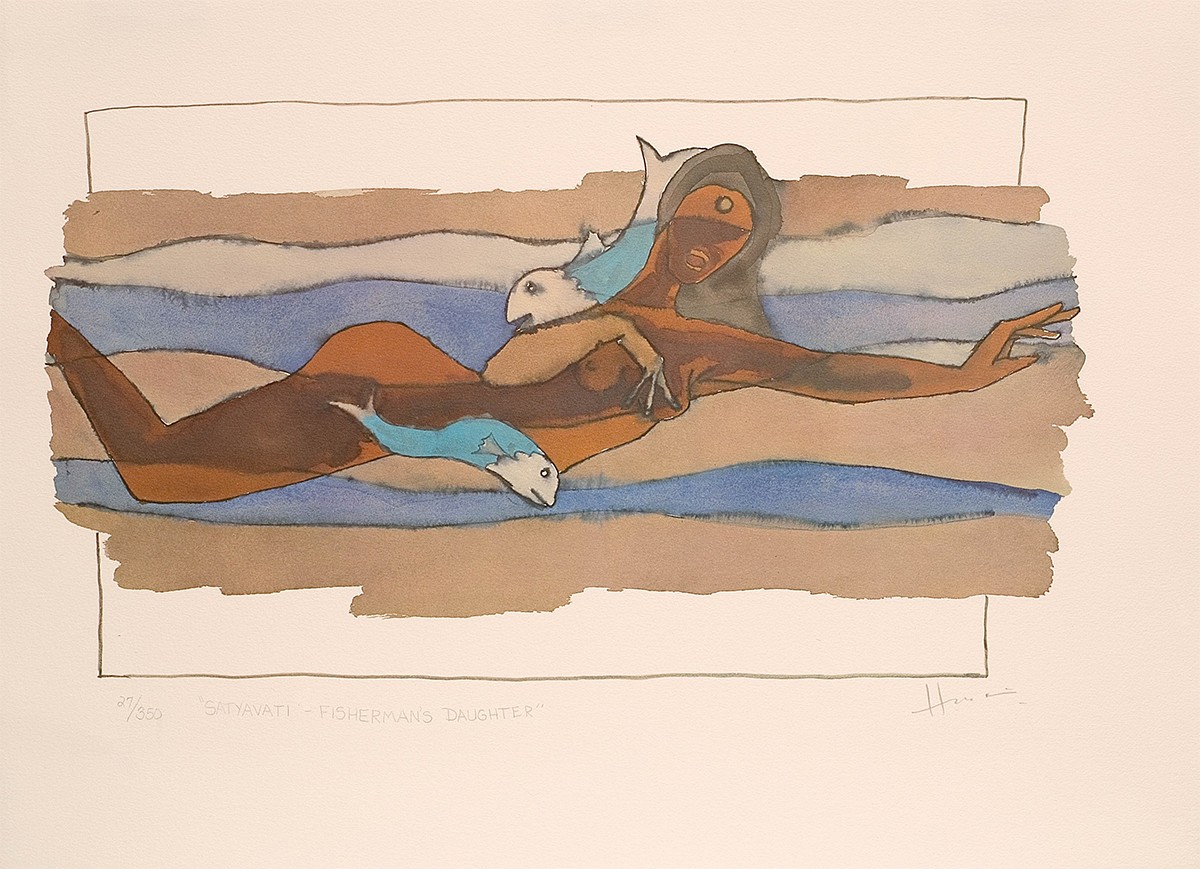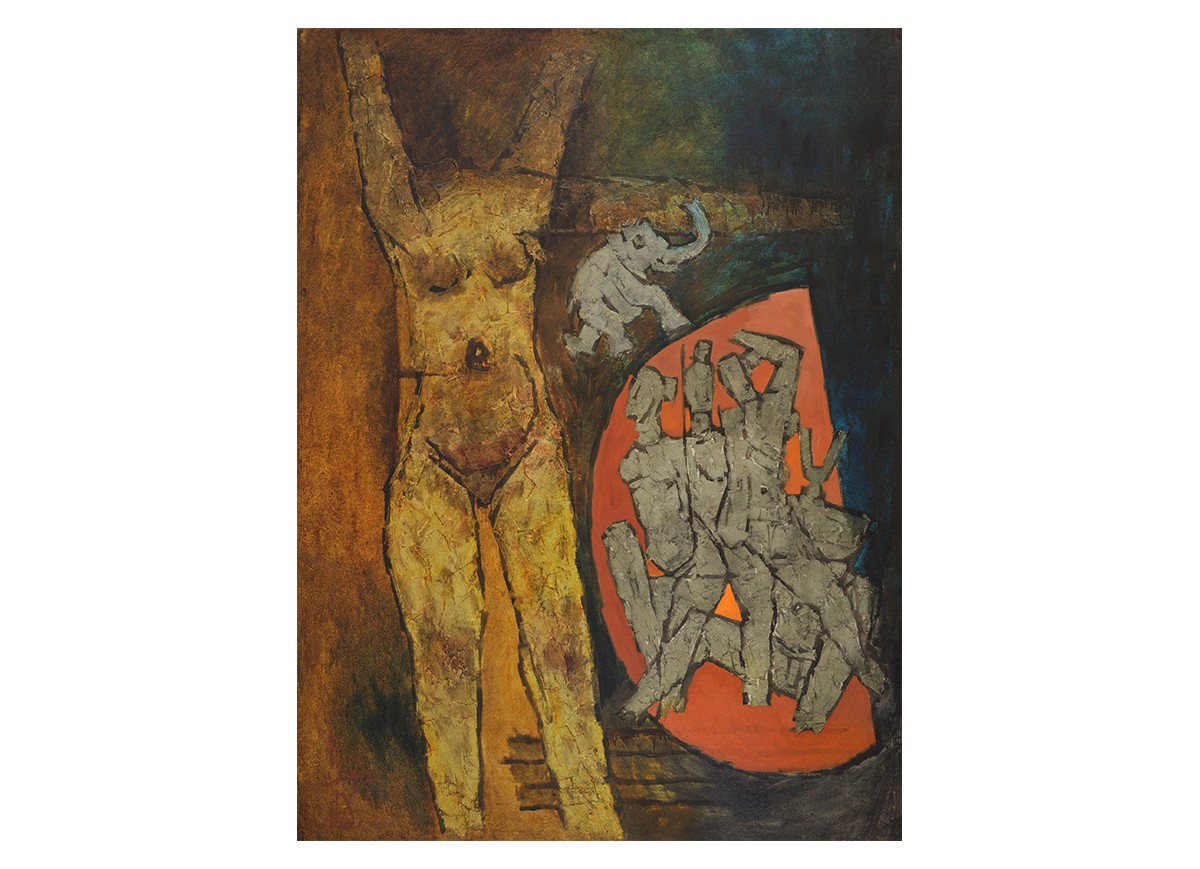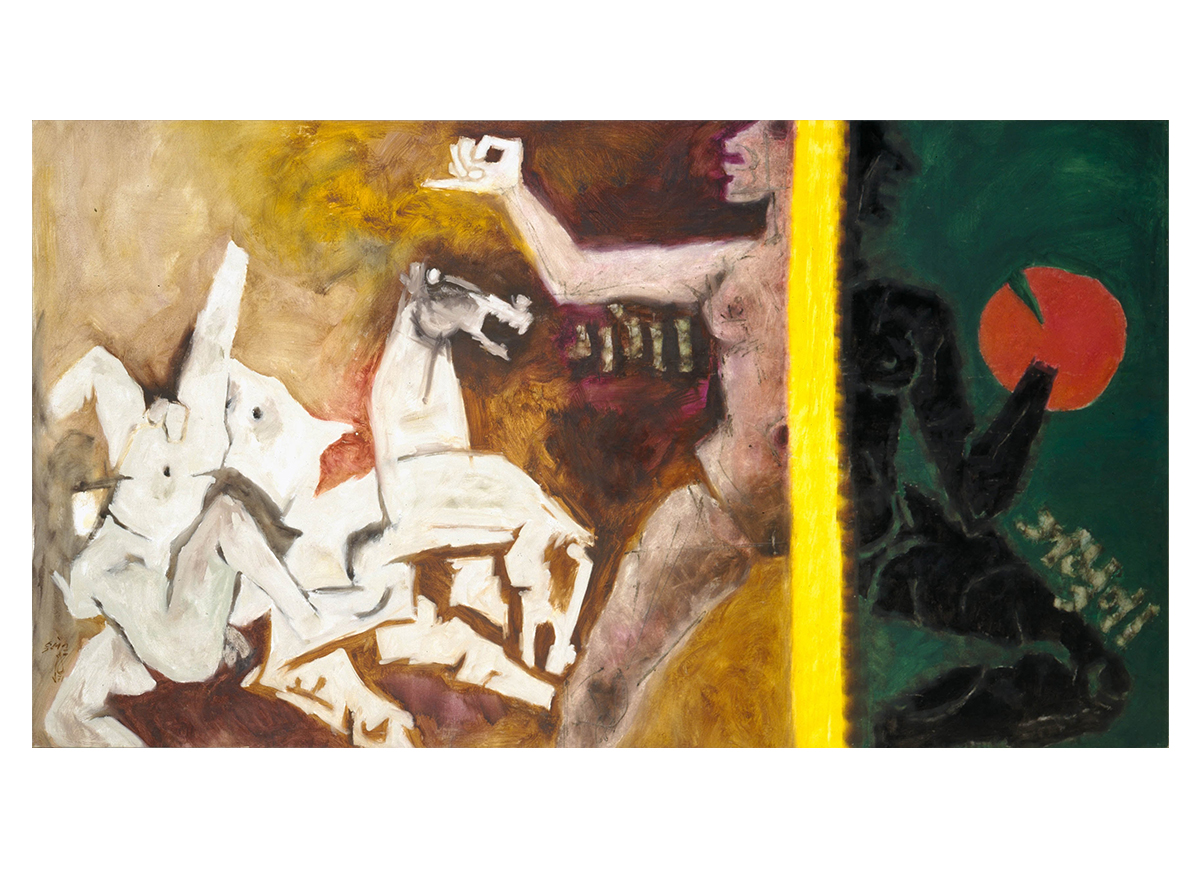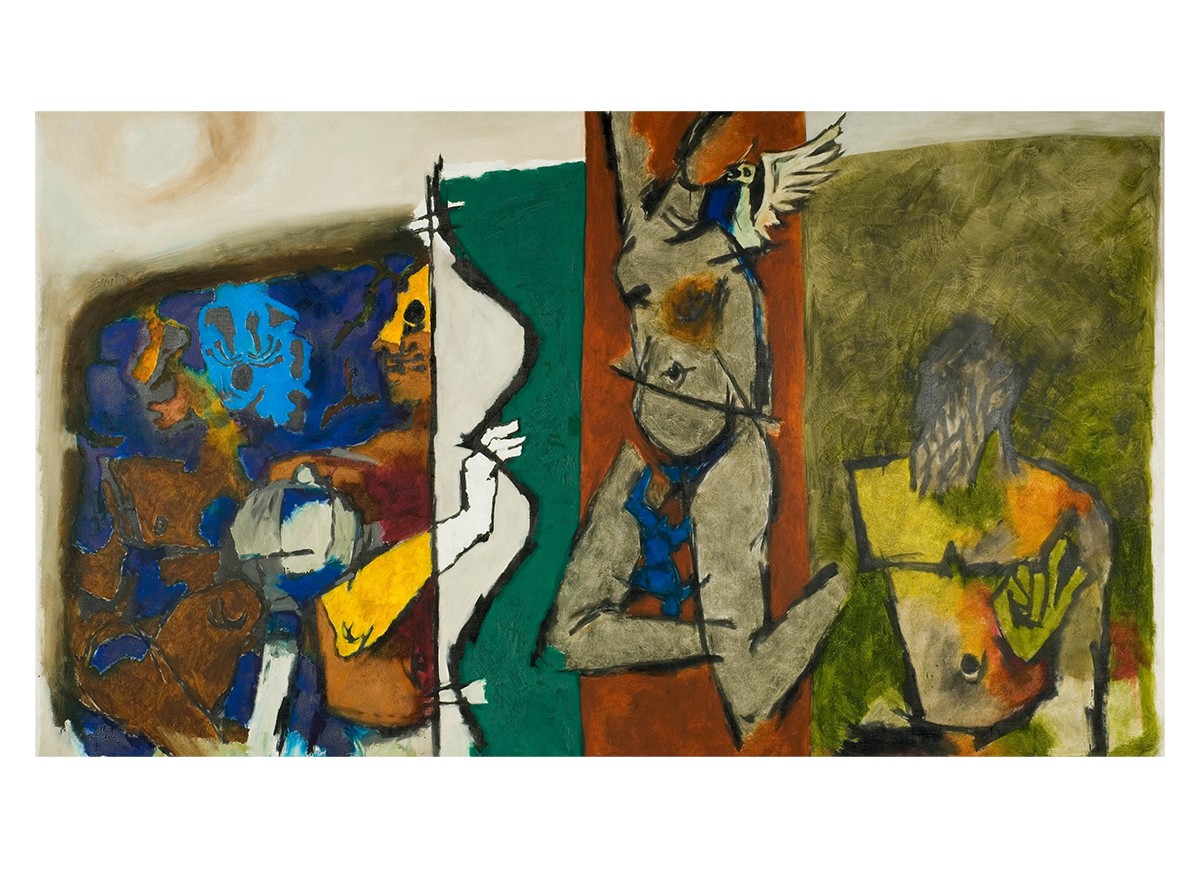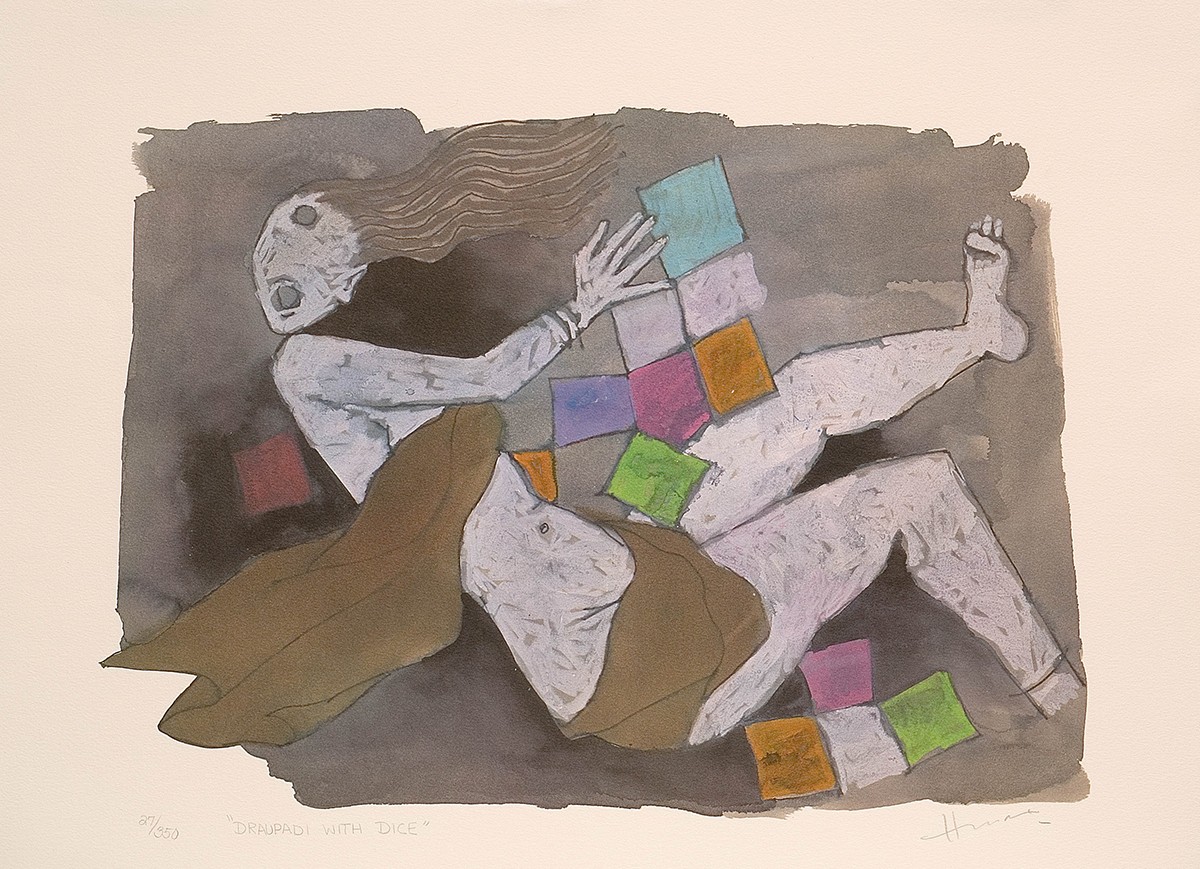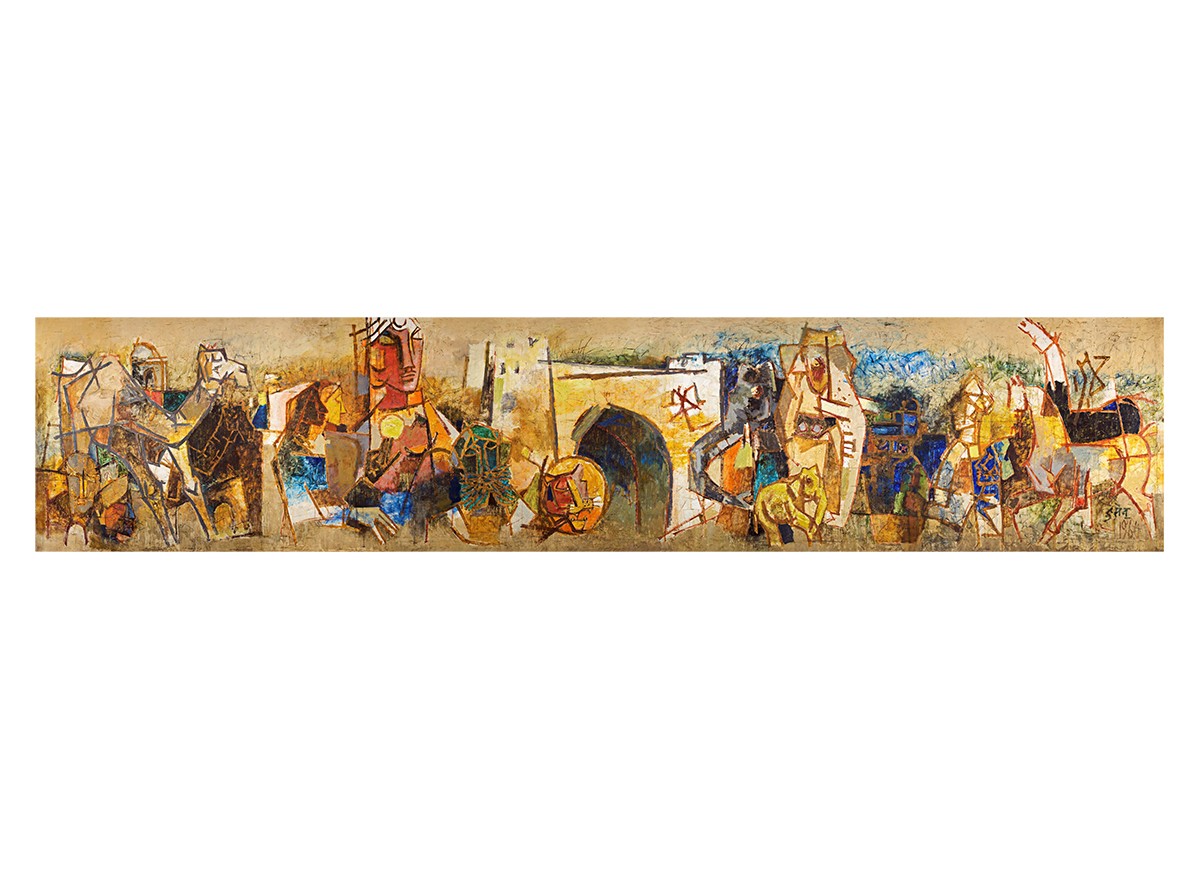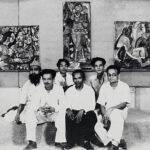MF Husain Leaves India
2005–2006
After facing repeated threats to his life and safety, the prominent Indian Modernist artist Maqbool Fida Husain is forced to leave India. He will live primarily between London and Doha in self-imposed exile from 2006 onwards, officially becoming a Qatari citizen in 2010, and passing away in London the following year.
In the 1990s and early 2000s, Indian political discourse has become increasingly divided along communal lines, primarily between the Hindu and Muslim communities, and is marked by events such as the demolition of the Babri Masjid in 1992 and the Gujarat riots of 2002 — both seen by some scholars describe as pogroms by Hindu nationalists against the Muslim minority — along with political scapegoating, communal riots and terrorist attacks in the city of Bombay (now Mumbai). These tensions eventually spill over into the art world, and Husain’s work begins to receive criticism from Hindu fundamentalist groups, who claim that his nude depictions of Hindu goddesses, such as Saraswati, Durga and Lakshmi, offend religious sentiments. These images — some of which were made as early as the 1970s — as well as a 2006 painting of a distressed nude woman interpreted as Bharat Mata (Mother India), lead to various lawsuits being filed against him, and instances of vandalism at some galleries displaying his work. Husain’s film Meenaxi: Tale of 3 Cities (2004) has also received backlash from Muslim clerics over its use of a Quranic verse, prompting him to pull it from circulation. Even outside of his work, Husain’s public image is unappealing to conservative Indians, who are discomfited by his apparently decadent lifestyle, with his sports car collection, expensive clothes and general life of luxury even in exile, as well as his fascination with Bollywood stars such as Madhuri Dixit.
Husain’s case will become a landmark example of cultural censorship in independent India’s history. While art historians and critics repeatedly defend his work and warn against the dangers of prioritising the sentiments of religious and nationalist groups over free expression, the consensus in mainstream Indian society today is that Husain is a controversial and even deliberately provocative artist.
Bibliography
Artnet. “M.F. Husain.” Artists. Accessed January 8, 2024. http://www.artnet.com/artists/maqbool-fida-husain/.
Grimes, William. “Maqbool Fida Husain, India’s Most Famous Painter, Dies at 95.” The New York Times, June 9, 2011. Accessed January 8, 2024.
https://www.nytimes.com/2011/06/10/arts/design/maqbool-fida-husain-indias-most-famous-painter-dies-at-95.html.
Guha-Thakurta, Tapati. “MF Husain Obituary.” The Guardian, June 15, 2011. Accessed January 8, 2024.
https://www.theguardian.com/artanddesign/2011/jun/15/mf-husain-obituary.
Roy, Amit. “Husain’s Meenaxi Uncut Gets Snapped Up at Cannes.” The Telegraph, May 20, 2004. Accessed January 10, 2024. https://www.telegraphindia.com/leisure/husain-s-meenaxi-uncut-gets-snapped-up-at-cannes/cid/749800.
Victoria and Albert Museum. “‘M.F. Husain: Master of Modern Indian Painting’: About the Exhibition.” Exhibitions: MF Husain. 2011. http://www.vam.ac.uk/content/exhibitions/mfhusain/about-the-exhibition/.
Feedback 
This entry appears in
Art in South Asia
Visit Timeline
Associated Timeline Events
First Published: March 11, 2024
Last Updated: July 2, 2024



